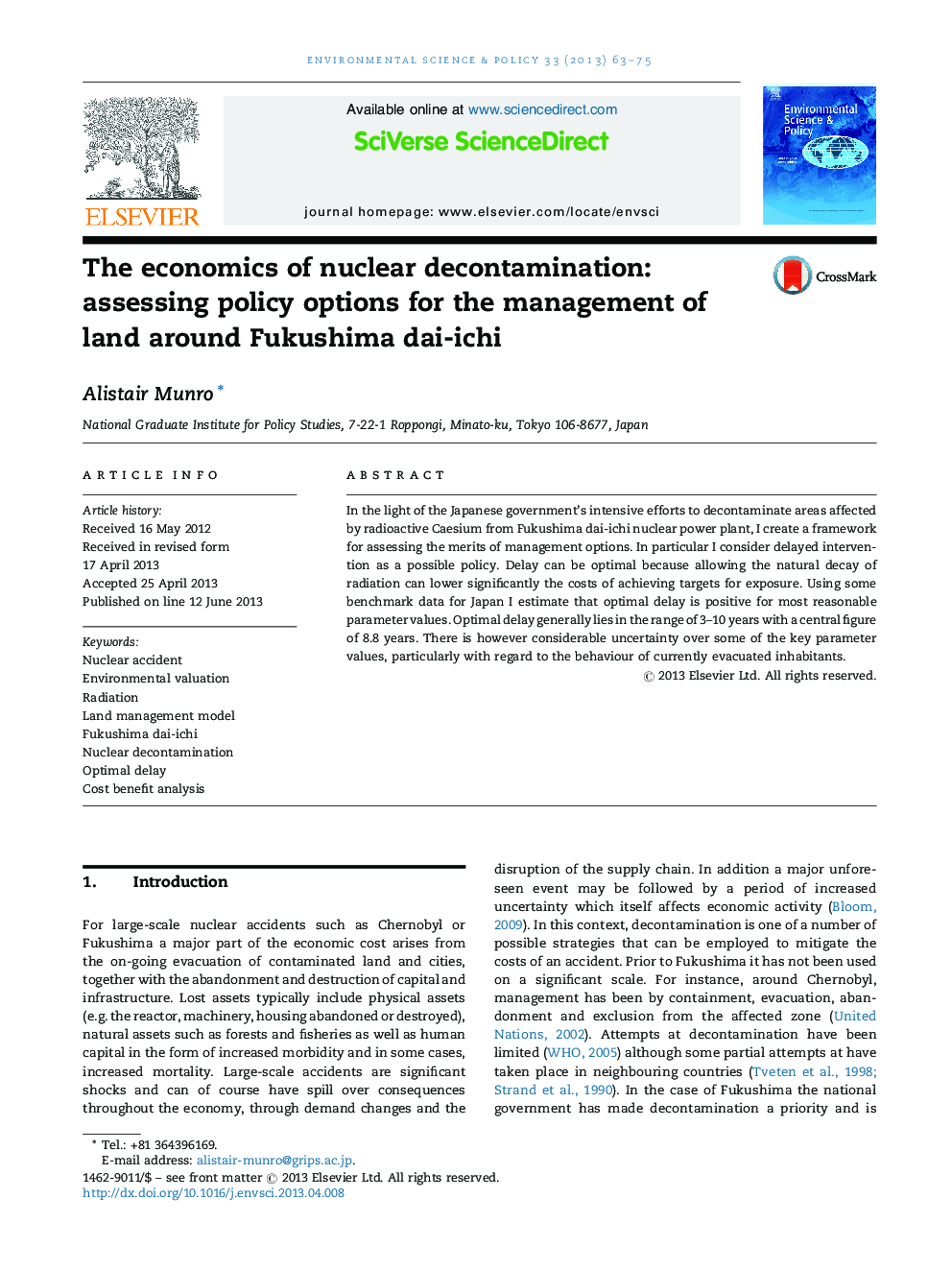| Article ID | Journal | Published Year | Pages | File Type |
|---|---|---|---|---|
| 1053643 | Environmental Science & Policy | 2013 | 13 Pages |
•Assesses land management options after the Fukushima accident.•Builds a model for exploring intervention and decontaminations options in areas affected by radioactive contamination.•Findings suggest delaying decontamination efforts by 3–10 years is optimal with a central figure of 8.75 years.•Results are sensitive to estimates of the benefits of resettlement.•Poor state of knowledge about some variables that are key for policy actions, such as psychological benefits and costs of resettlement.
In the light of the Japanese government's intensive efforts to decontaminate areas affected by radioactive Caesium from Fukushima dai-ichi nuclear power plant, I create a framework for assessing the merits of management options. In particular I consider delayed intervention as a possible policy. Delay can be optimal because allowing the natural decay of radiation can lower significantly the costs of achieving targets for exposure. Using some benchmark data for Japan I estimate that optimal delay is positive for most reasonable parameter values. Optimal delay generally lies in the range of 3–10 years with a central figure of 8.8 years. There is however considerable uncertainty over some of the key parameter values, particularly with regard to the behaviour of currently evacuated inhabitants.
